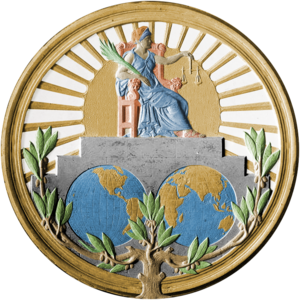|
Statute of the International Court of Justice
The Statute of the International Court of Justice is an integral part of the United Nations Charter, as specified by Chapter XIV of the United Nations Charter, which established the International Court of Justice (replacing the Permanent Court of International Justice). StructureThe Statute is divided into 5 chapters and consists of 70 articles. The Statute begins with Article 1 proclaiming:
The 69 Articles are grouped in 5 Chapters:
Parties to the Statute
All 193 UN member states are parties to the Statute by virtue of their ratification of the UN Charter. Under Article 93(2) of the UN Charter, states which are not a member of the UN may become a party to the Statute, subject to the recommendation of the United Nations Security Council and approval of the United Nations General Assembly.[1] As of 2025, neither the UN General Assembly non-member observer states, namely the State of Palestine and the Holy See, nor any other states are parties to the statute under these provisions. Switzerland (1948-2002), Liechtenstein (1950-1990), San Marino (1954-1992), Japan (1954-1956), and Nauru (1988-1999) were all parties to the Statute prior to becoming UN member states.[2][3] Additionally, states which are not party to the Statute can also make use of the court, under Article 35(2) of the Statute, if they make a declaration accepting the court's jurisdiction and to abide by its rulings. As of 2025, Palestine has made two such declarations for different disputes.[4] References
External linksWikisource has original text related to this article:
|
|||||||||||||||

